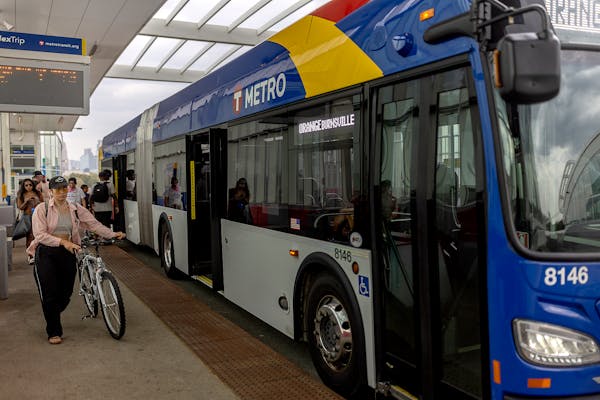Dakota County will spend a slice of its new affordable housing funds on rent vouchers for homeless families trying to leave the shelter, filling a void between what the families earn and the steep cost of renting an apartment.
Most of the money for the county's new Family Housing Voucher program will come from the new 1% sales tax increase in the metro area, 0.25% of which is dedicated for housing. Additional funding will come from the Statewide Affordable Housing Aid program; both were authorized by the Legislature in 2023.
The program is "like a bridge, a soft transition to stability" for families, said Evan Henspeter, the county's social services director.
Dakota County will receive about $7 million to $12 million annually from the sales tax. The new voucher program will cost about $400,000 the first year but will increase to $2.6 million by year five.
"Basically, the [Dakota County Board] asked staff: This infusion of money is coming in; what is the biggest difference that we can make quickly?" said Dakota County Commissioner Laurie Halverson. "This was the recommendation."
The voucher program
The program will provide vouchers for 22 families annually for about five years while the families sit on the waiting list for federal housing choice vouchers, previously known as Section 8 vouchers. By the fifth year, the program will be helping over a hundred families.
Eligible families must be staying at Dakota Woodlands, the county's only shelter for homeless families, which accommodates 22 families. An additional 50 families are usually on the shelter's waiting list since pandemic-era aid expired, Henspeter said.
"We've seen more families with minor children experiencing homelessness," Henspeter said. "It's been sort of steadily increasing over the last decade or so."
Families are often ready to leave Dakota Woodlands but cannot afford an apartment, he said. This stalls the process of new families moving into the shelter.
"Typically, social workers can find places for people to move into," Henspeter said. "One of the biggest gaps is the affordability of the units that are available compared to the family's income."
Families must make 50% or less of the area median income — for a family of four, that means an annual income of $62,100 or less to qualify. They'll put 30% of their income toward rent and the voucher will cover the rest; the average voucher will be for about $1,100, though amounts will vary based on the unit and the family's income.
A typical two-bedroom apartment in Dakota County costs about $1,300, while a three-bedroom runs about $1,600.
Other counties' ideas
Matt Hilgart, government relations manager for the Association of Minnesota Counties, called the Local Affordable Housing Aid program — where the 0.25% metro-area sales tax goes — historic because of the "sheer volume" of revenue it generates.
Both cities and counties receive the aid based on their share of residents burdened by housing costs.
There were "varying levels of enthusiasm" among counties for increasing the sales tax, but everyone agrees there's a need for help tackling affordable housing, he said.
Counties weren't traditionally involved in providing housing but picked it up over the last decades because of the dramatic need, he said. They already manage social safety net programs receiving state and federal funds, which gives them experience relevant to working on affordable housing.
Metro-area counties are weighing how to use their money, with many looking to supplement current housing programs or start something new, he said.
Ramsey County is using it for emergency rental assistance and to stabilize existing affordable housing, since many nonprofit providers are struggling financially since the pandemic. Anoka County is buying a decommissioned assisted living building and renovating it to create up to 24 apartments, including larger four-bedroom units, he said.
In Hennepin County, officials are expecting $20 to $30 million annually in new local and statewide affordable housing aid combined. The county is using the money on five programs, said Julia Welle Ayres, Hennepin County's director of housing development and finance.
Eviction prevention is an area "where we've been able to hit the ground running," said Will Lehman, an area manager in housing stability for Hennepin County's human services department.
Another area where officials plan to use funds: helping affordable housing nonprofits recover from pandemic-era losses so they can prepare to build more housing. Other programs will be implemented closer to 2026, Welle Ayres said.
Dakota County will also use the money on other projects. One possibility is a rental housing voucher for single adults, Henspeter said.
For families, a homeless shelter stay can be destabilizing — and costs $100 more per day than providing housing through the Family Housing Voucher.
"The whole idea is to make homelessness a really brief experience and something people don't fall back into for economic reasons," he said.

'Safe recovery sites' would offer syringes, naloxone and more to people using drugs. The plan could be in peril.
New Minnesota GOP leaders seek peace with party's anti-establishment wing

Who is Republican Lisa Demuth, Minnesota's first House speaker of color?



